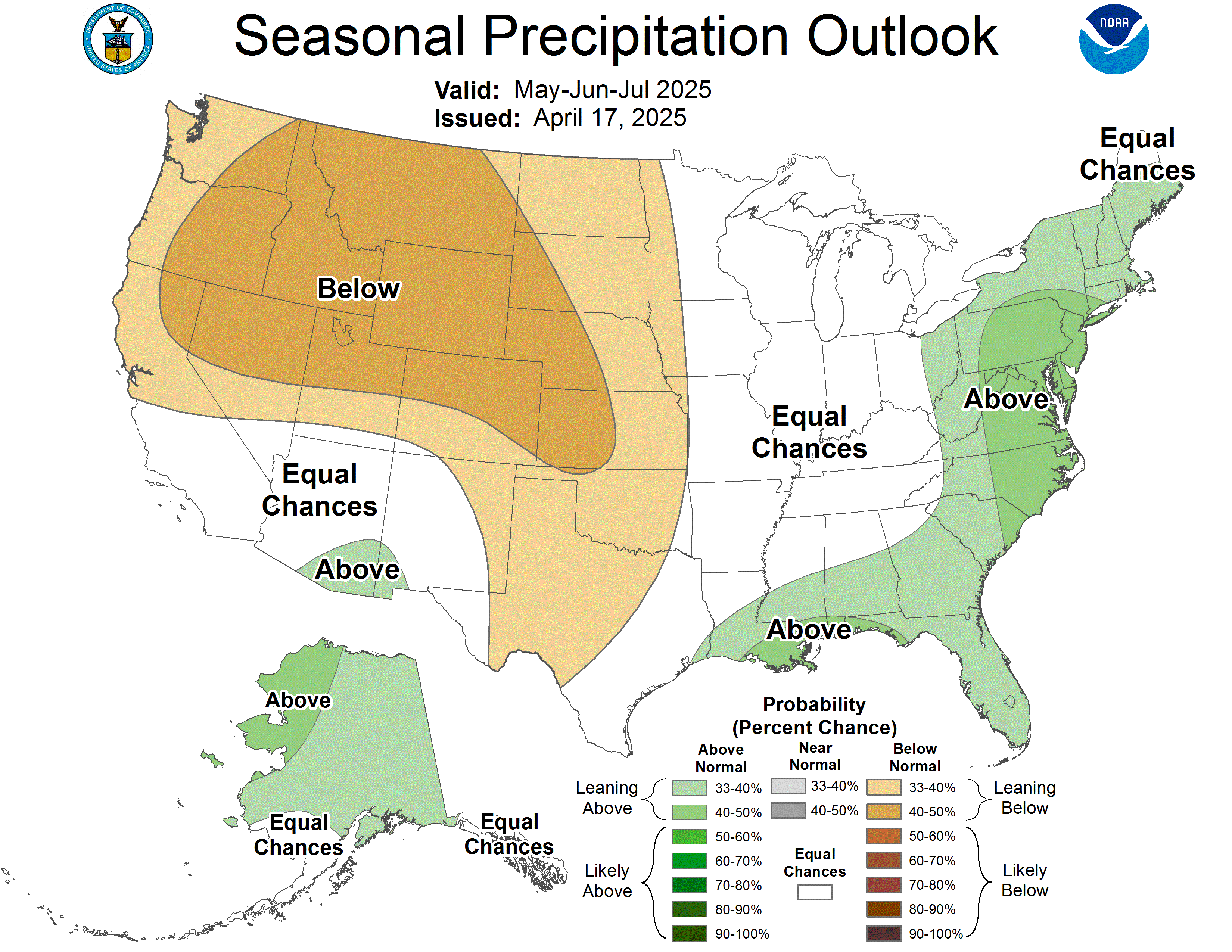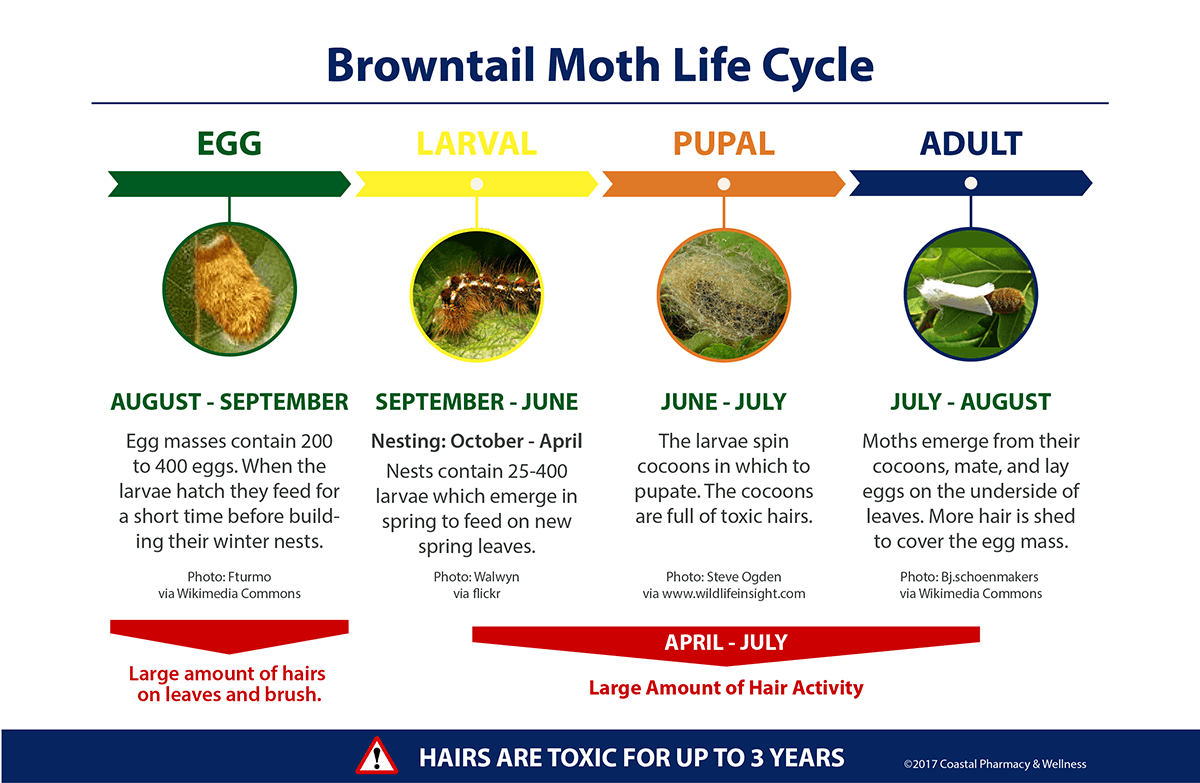The Browntail Moth has gained notoriety in recent years due to their population spikes, which have reached historic levels. The reason for heightened concern is that the toxic hairs shed by browntail moth caterpillars can cause severe rash or respiratory issues. The health threat is particularly challenging because the poisonous caterpillar hairs are easily airborne and encountered unknowingly. Even driving through an infested area in an open-air vehicle can lead to issues for sensitive individuals.
2025 Maine Browntail Moth Update
Although the Department of Forestry has spotted browntail moth caterpillar webs in all 16 Maine counties, the populations decreased in 2024. They will wrap up their winter web survey in March, so watch their website for the results. Links to the most recent survey maps from the Maine Department of Agriculture, Conservation, and Forestry:
- 2024 Maine Forest Service Forest Health and Monitoring Report (see page 7 for BTM details)
- 2023 Browntail Moth Winter Web Survey
- Maine DACF Interactive Aerial Survey Map
There are no 2024/2025 maps at this time. Visit the Maine Forest Service’s news section for the most up-to-date information, or subscribe to the Department of Agriculture, Conservation, and Forestry updates.
Weather Forecast
The weather plays a huge part in hair activity. Dry and windy weather sets the hairs in motion, while rainy weather keeps the hairs from becoming airborne. Continually wet conditions can also produce a fungus that kills the caterpillars (see below). Climate predictions from the National Weather Service indicate that precipitation levels will be normal this spring. While this is great for outdoor activities, you’ll want to take precautions if you’re in areas of infestation, especially on windy days.
The previous year also plays a role. A fungus (entomophaga aulicae) can develop in particularly wet springs, killing the caterpillars. Fewer caterpillars emerging from webs means they will not turn into moths that lay lots of eggs that hatch the following year. That is substantial since each moth lays 25-400 eggs. We had normal rainfall totals in the spring of last year; however, the browntail moth population still decreased. We think this is indicative that communities are making good eradication progress.
Suffering from the Browntail Moth Caterpillar Rash?
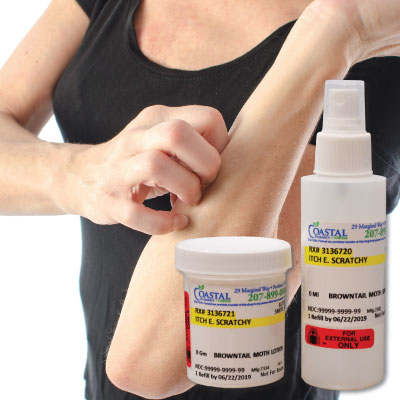
What causes the health issues of the Browntail Moth caterpillar?
Caterpillar rashes aren’t new or uncommon. Several caterpillar species contain poisonous hairs; fortunately, they have relatively benign health consequences. That said, they can cause significant discomfort. Throughout much of its life cycle, the moth sheds its toxic hairs, which become airborne or attach to leaves and brush. When the barbed hairs contact our skin or lungs, they can cause itchy, painful rashes or respiratory issues. Issues are reported most in June and July when the toxin concentration in mature larvae is at its highest.
Respiratory Issues
Respiratory issues are less common but can be particularly problematic for asthmatics. People with asthma should carry an inhaler when spending time outside, especially in windy conditions. In addition, especially sensitive individuals may want to wear a mask that covers their nose and mouth.
Hairs that get caught in the mucosal areas of the mouth or throat can cause burning, irritation, or itchiness. Taking liquid Benadryl may relieve symptoms, which helps counter the histamine reaction caused by the hairs. We encourage you to seek medical attention if symptoms progress.
Skin Reactions
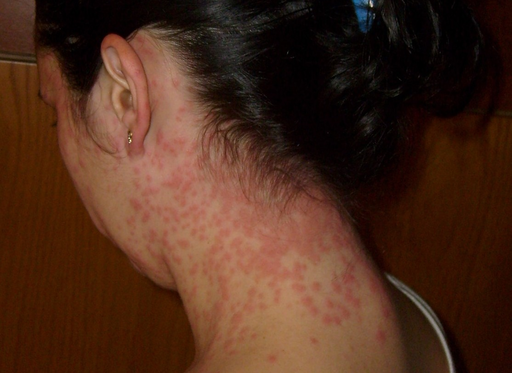
The most common reaction occurs when the caterpillar’s poisonous hairs contact the skin. The contact can cause chemical reactions to the toxins and physical irritation when the hairs become embedded in the skin. The chemical reaction, dermatitis, produces a severe rash similar to poison ivy. Symptoms can begin immediately or several hours after exposure and last a few days or weeks.
Some people are unaffected by the toxins, while others have extreme reactions and discomfort. Unlike the oil of the poison ivy plant, the hairs are not likely to transfer to others through physical contact. Many patients report that the rash starts with one small area and spreads across larger areas. The spread can be caused by transferring the toxins by scratching affected areas or from continued exposure to the hairs in the environment.
Browntail Moth Rash Treatment
No antidote exists for the toxins, so treatment focuses on relieving symptoms and eliminating further exposure. Over-the-counter products are a good start for mild cases. Severe reactions may require prescription-strength topical therapies, oral steroids, or both. Please consult your doctor or urgent care clinic to determine the appropriate action.
Over-the-Counter Treatments
Although you can try a single product, you may need a combination of products to address the multiple symptoms of the browntail moth rash (itching, burning, pain, swelling, etc.). Below are two “recipes” for an over-the-counter version of our prescription-strength lotion and spray. Although not as strong as our compounded lotion, patients have communicated that they work well.
Since many reactions occur over weekends, seeing a doctor may not be immediately possible. In these cases, you may find relief by soaking in a warm bath and applying calamine lotion or antihistamine cream. Also, try the over-the-counter formulation below.
OTC Lotion
Combine equal parts of the following creams:
- hydrocortisone 1%
- diphenhydramine hydrochloride 2% and zinc acetate 0.1%
- lidocaine 4%
OTC Spray
In a spray bottle, combine equal parts of the following cremes and fill the rest of the bottle with witch hazel.
- hydrocortisone 1%
- diphenhydramine hydrochloride 2% and zinc acetate 0.1%
- lidocaine 4%
- witch hazel
Prescription-Strength Treatments

We make a prescription-strength topical browntail moth medication that can significantly reduce discomfort. The compound is available by prescription only in lotion and spray form. The spray is especially beneficial in treating these rashes because they are often painful to touch. A provider may also prescribe a course of oral corticosteroids for those with an acute case.
Prevention Tips
There are several actions you can take to reduce your exposure risk.
- Avoid places that appear to be infested.
Indicators include vacated nests and defoliated trees and shrubs. - Wear a respirator and protective eyewear and cover exposed areas of skin while landscaping.
This is important on windy days or when performing activities that would stir up hairs such as lawnmowing or raking. - Wipe or rinse off lawn furniture before sitting in them.
- Cover your skin and wear eyewear when driving through infested areas in an open-air vehicle.
- Close your car windows when driving through an infested area.
- Do yard work on damp days or spray the area you’re working in.
Moisture will help keep the hairs from becoming airborne. - Blow window fans outward instead of inward.
You may not get the benefit of the breeze, but it will pull hot air out and prevent hairs from coming in from outside. - Don’t dry laundry outside.
Hairs can become embedded in clothes and cause reactions when you wear them. - Wash exposed clothes (not with unexposed clothes) after spending time in an infested area to remove embedded hairs.
- Take a long cool shower after spending time in an infested area.
- Use duct tape to remove any hairs that may have embedded while outside.
Infestation Reduction
The best way to avoid the health repercussions is to remove the threat. Here are some tips:
- Remove nests.
Remove winter webs in winter or early spring, while the larvae are dormant. Many nests are too high for the average person to remove, so check with an arborist to see if they offer nest removal service. View a list of licensed arborists willing to prune winter nests or a list of licensed pesticide applicators willing to treat browntail moth. - Reduce outdoor lighting in late summer/early fall.
Like other moths, adult browntail moths are highly attracted to light. Avoid attracting these pests to your yard, where they will lay eggs and cause further problems. - Talk to a Pest Solution Expert
If you have them on your property, you can take action to address them. Even if you’re not fond of pesticides, there are options that are safe for trees and reduce the risk of human and animal exposure. You can find options by Googling “browntail moth removal.”
How do you know they’re in the area?
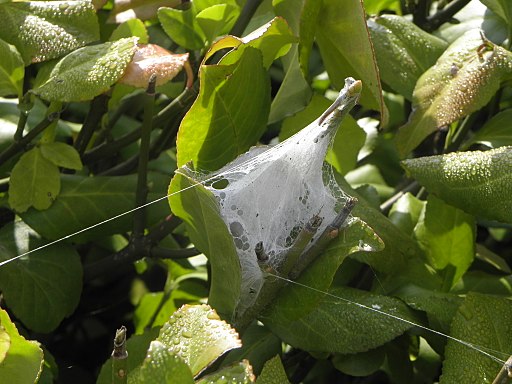
Their nests are noticeable webs that are typically found in oak or apple trees. They appear in the fall and shelter the larvae through winter. In spring, hundreds of larvae can emerge from each nest to start wreaking havoc on trees and humans.
The best indicators of browntail moth infestation are vacated nests and trees and shrubs with a lot of missing leaves. It’s also common to see browntail moth caterpillars laying on the ground after falling from trees. In fact, if you’re in an infested area, be very careful not to swat at something that has fallen on you. We’ve seen many people come in with a large swath of rash where they smashed and dragged a hairy caterpillar across their skin. It’s not pretty.
Frequently Asked Questions
Depending on your sensitivity to the toxins, the rash can last a day or several weeks.
The moth is white with a brown tail. You’ll typically start to see them in late summer.
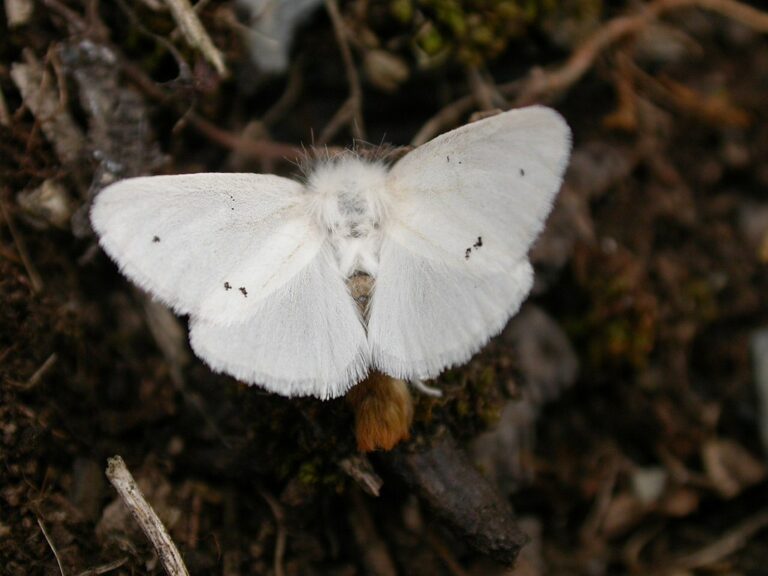
The caterpillar is brown and white with tell-tale orange dots on its back. It has long reddish brown hairs protruding from its sides and back.
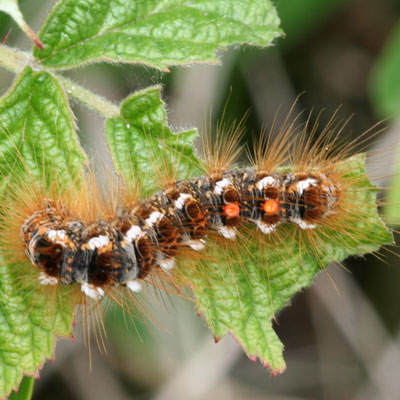
Not likely. The caterpillars are the ones that carry the poisonous hairs.
The rash has multiple symptoms that you may need to treat with multiple products. The severity level also varies wildly. While some have very mild reactions, others have intense reactions leading to lost sleep and work. While it’s impossible to guarantee results, we’ve heard great things about both OTC and prescription solutions. It all depends on your level of discomfort and how well your body responds to the treatment method. OTC and prescription-strength medications include hydrocortisone, lidocaine, and diphenhydramine. Calamine lotion, witch hazel and oatmeal baths, bars, and lotions also can provide relief. If you’re losing sleep, you may want to consider taking diphenhydramine (Benadryl) orally.
No. In general, moths lack the proper mouthparts for biting. If you have a reaction to a moth or moth larvae, it’s most likely due to chemicals/toxins present on their bodies.
We are not contracted with insurance companies, however, we can provide a universal claim form for you to submit to your insurance company.
Yes. Although we named them after the browntail pestilence, they can be used for many other types of dermatitis and contact rashes.
Resources and More Information
- Frequently Ask Questions from the Maine Forest Service
This is a really good resource for questions you have about controlling the population, avoiding the rash, etc. - Maine Forest Service
The site contains a lot of information including a risk map and a list of arborists willing to prune browntail webs. - Maine DACF Interactive Aerial Survey Map
- 2023 Browntail Moth Winter Web Survey
- Maine CDC Division of Disease Surveillance
Information on the rash and how to submit areas as a public health nuisance. - Midcoast Browntail Moth Support Facebook Page
Updates on the situation as they get them. - Browntail Moth Research Report from U-Maine
- Town of Falmouth Browntail Moth Updates
Includes spraying information and a list of roads to be treated. - Yarmouth Browntail Moth Updates
Includes information on the treatments and a list of arborists in Cumberland County who will prune webs and apply pesticide treatments. - State of Maine Browntail Moth Control Statutes
Includes information on declaring a public health nuisance and aerial spraying rules. - Harpswell study finds surprising browntail moth survival Forecaster article summarizing a study funded by the town of Harpswell.
- Browntail Moth Field Research and Trials
Harpswell Heritage Land Trust - Bills that have gone through the State Legislature:
- HP 371, (131st Legislature) Joint Resolution Recognizing February 2023 as Browntail Moth Awareness Month
- LD 1929, HP 1436, (130th Legislature) An Act To Provide Assistance to Areas Severely Infested with Browntail Moths
- LD 643, HP 464, (129th Legislature) An Act To Provide Funding to Municipalities Severely Affected by Pest Infestations
- LD 840, HP 614, (129th Legislature) An Act Regarding the Control of Browntail Moths
- LD 1037, HP 767, (129th Legislature) An Act To Address the Browntail Moth Infestation
Fiscal Appropriations - LD 2195, HP 1565, (123rd Legislature) Resolve, Regarding Legislative Review of Portions of Chapter 29: Standards for Water Quality Protection, Section 5, Restrictions on Pesticide Application To Control Browntail Moths near Marine Waters, a Major Substantive Rule of the Department of Agriculture, Food and Rural Resources, Board of Pesticides Control
- LD 1790, HP 1263 (118th Legislature) An Act to Control Browntail Moths


